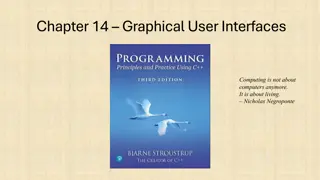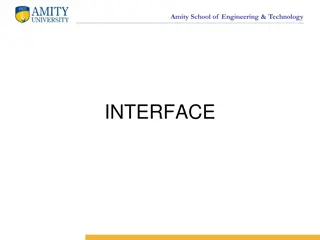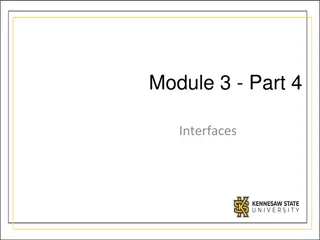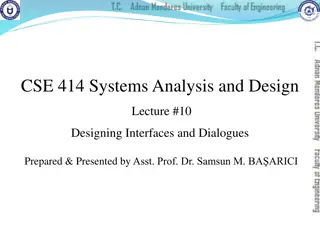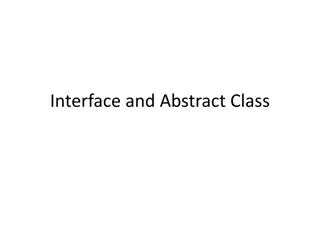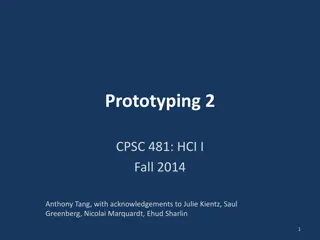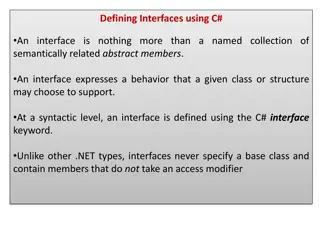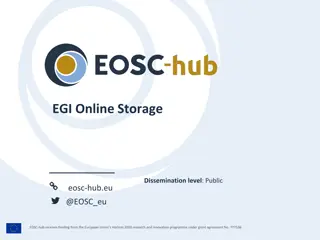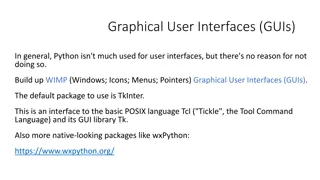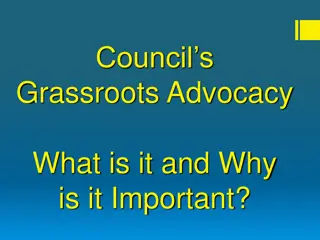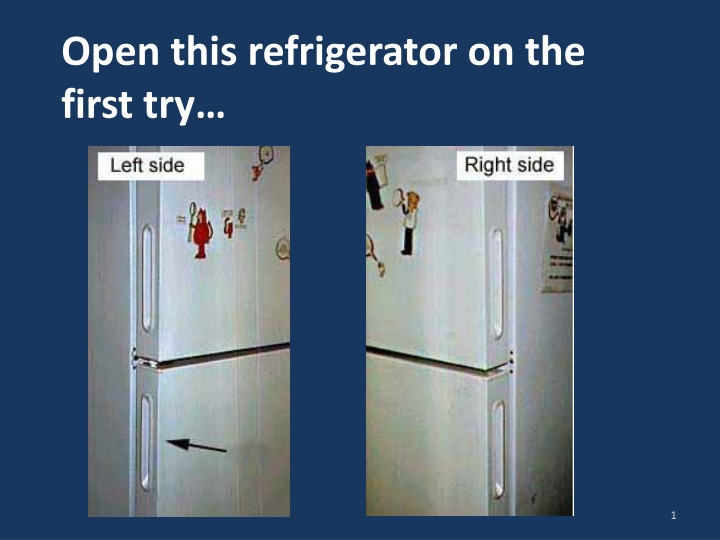
Good Interface Design and User Experience Fundamentals
Explore the key aspects of creating a good interface and user experience, including design principles, characteristics of a good interface, design vs. engineering, and the importance of user-centered design. Learn why designing interfaces can be challenging and what it takes to be a good designer.
Download Presentation

Please find below an Image/Link to download the presentation.
The content on the website is provided AS IS for your information and personal use only. It may not be sold, licensed, or shared on other websites without obtaining consent from the author. If you encounter any issues during the download, it is possible that the publisher has removed the file from their server.
You are allowed to download the files provided on this website for personal or commercial use, subject to the condition that they are used lawfully. All files are the property of their respective owners.
The content on the website is provided AS IS for your information and personal use only. It may not be sold, licensed, or shared on other websites without obtaining consent from the author.
E N D
Presentation Transcript
Open this refrigerator on the first try 1
Outline What makes good interface? What is design? Why design is hard Different kinds of error What we need to be good designers 2
What makes a good interface? CPSC 481: HCI I 3
Characteristics of a good interface people feel satisfied when they use them people can complete their tasks error-free people can complete their tasks quickly* people can learn how to use the system (and its full functionality) quickly* * Why the asterisks? 7
What is design? Creative endeavor Process of creating or shaping tools or artifacts for direct human use. Outputs are things people-centered concerns Processes, methods 8
design vs. engineering Engineering Make a mostly-known outcome possible Construct a sturdy bridge based on specifications Concerned with what can be done Reliance on well-established formulae Humans may or may not be directly in the loop Design Envision new possibilities, new outcomes Determine what outcome should result among infinite possibilities Reliance on process over formulae Humans are central actors in the loop Context [cultural and temporal] matter 9
design vs. art Design (as we regard it) concerns the creation of something useful and usable Art does not bother with this restriction The test: how to deem what is good ? 10
Why should we care? Shift of attention in computer science: Algorithms People 11
Moores Law Gordon Moore (Intel): 1965 The complexity for minimum component costs has increased at a rate of roughly a factor of two per year... Certainly over the short term this rate can be expected to continue, if not to increase. Over the longer term, the rate of increase is a bit more uncertain, although there is no reason to believe it will not remain nearly constant for at least 10 years. 12
People stay the same smartness law Human cognitive ability human abilities 1950 1990 2030 2000BC 14
What is designed? Anything consciously intended for human use is designed. 15
Characteristics of a good interface people feel satisfied when they use them people can complete their tasks error-free people can complete their tasks quickly* people can learn how to use the system (and its full functionality) quickly* * Why the asterisks? 16
Why is design hard? Everyone is different Age, knowledge, skill, ability, background People appropriate technology unexpectedly Designer s fallacy: that a designer can design into a technology, its purposes and uses Contexts of use may differ than what we expect Smartphone app use in the early days, and now 18
Appropriation In action 19
Why is design hard? Judging/predicting which designs will be successful is difficult Way more is possible than what is good Design involves making trade-offs Good designs are non-obvious 22
People make errors: two kinds People make errors slips: error in carrying out an action [e.g. motor action] mistakes: error in choosing an objective or action [e.g. cognitive goal] Key: mistakes typically occur when a person misunderstands something in the system; a slip you could imagine to be a lapse in attention, or due to a change in typical circumstance The distinction matters because as designers, we want to help users avoid mistakes. With careful design, we can help avoid slips, too. 23
Slip vs. Mistake Imagine you are using a mapping application wanted to find something, and clicked this icon. Let s pretend that in the application, the icon meant to magnify. Is this a slip or a mistake? 24
Slip or mistake? Exercise: classify these Mistyping an email address Clicking on a heading that isn t clickable Clicking Save instead of Open Sending an email without remembering to add the attachment Typing both first and last name in the first name field 25
Core design skills To synthesize a solution from all of the relevant constraints, understanding everything that will make a difference to the result To frame, or reframe, the problem and objective To create and envision alternatives. To select from those alternatives, knowing intuitively how to choose the best approach. To visualize and prototype the intended solution 26
The user is not like me Familiarity with the interface problems being solved Confidence Designer s setting vs. user s setting Designers have different skills (perceptual, cognitive, or domain) 27
You now know Some characteristics of a good interface Design (vs. engineering; vs. art) Motivation for design Why design is hard characteristics of people randomness of people (appropriation) unexpected contexts of use Different kinds of error (slips vs. mistakes) What we need to be good designers Mantra: the user is not like me 28


